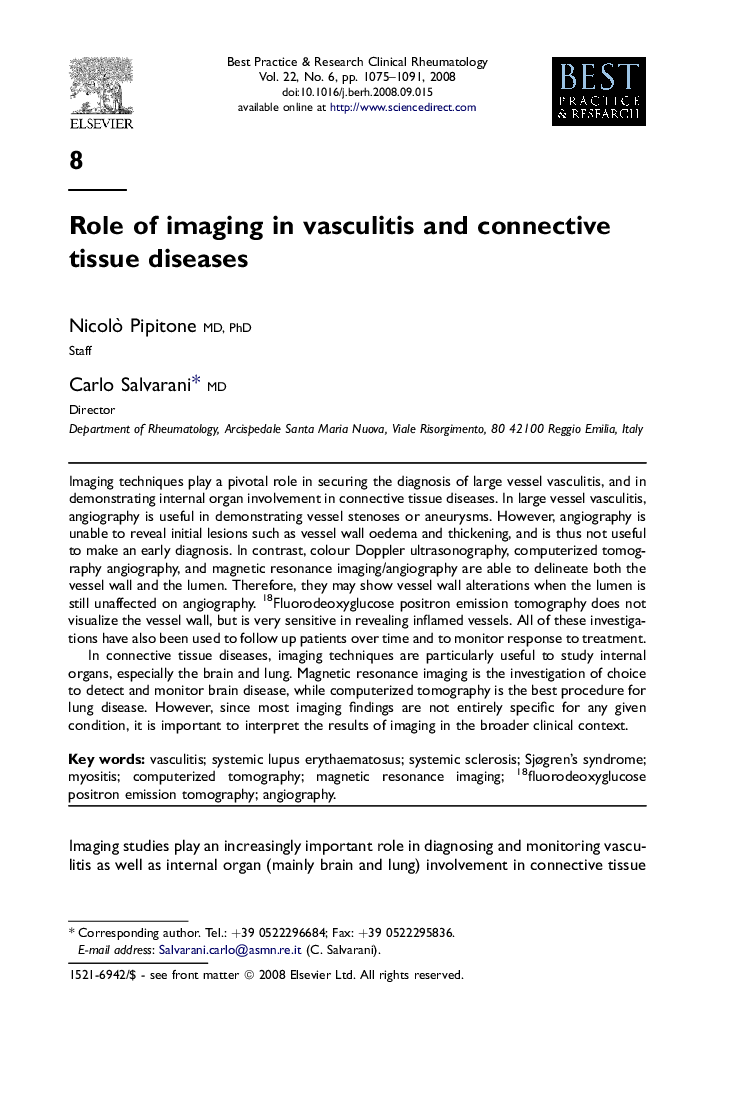| Article ID | Journal | Published Year | Pages | File Type |
|---|---|---|---|---|
| 3343374 | Best Practice & Research Clinical Rheumatology | 2008 | 17 Pages |
Imaging techniques play a pivotal role in securing the diagnosis of large vessel vasculitis, and in demonstrating internal organ involvement in connective tissue diseases. In large vessel vasculitis, angiography is useful in demonstrating vessel stenoses or aneurysms. However, angiography is unable to reveal initial lesions such as vessel wall oedema and thickening, and is thus not useful to make an early diagnosis. In contrast, colour Doppler ultrasonography, computerized tomography angiography, and magnetic resonance imaging/angiography are able to delineate both the vessel wall and the lumen. Therefore, they may show vessel wall alterations when the lumen is still unaffected on angiography. 18Fluorodeoxyglucose positron emission tomography does not visualize the vessel wall, but is very sensitive in revealing inflamed vessels. All of these investigations have also been used to follow up patients over time and to monitor response to treatment.In connective tissue diseases, imaging techniques are particularly useful to study internal organs, especially the brain and lung. Magnetic resonance imaging is the investigation of choice to detect and monitor brain disease, while computerized tomography is the best procedure for lung disease. However, since most imaging findings are not entirely specific for any given condition, it is important to interpret the results of imaging in the broader clinical context.
